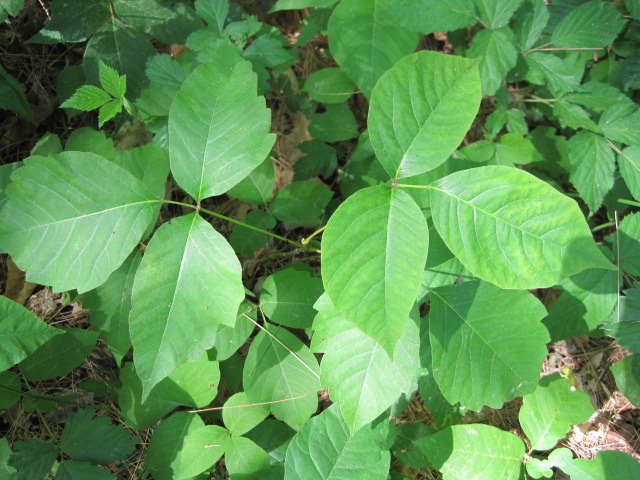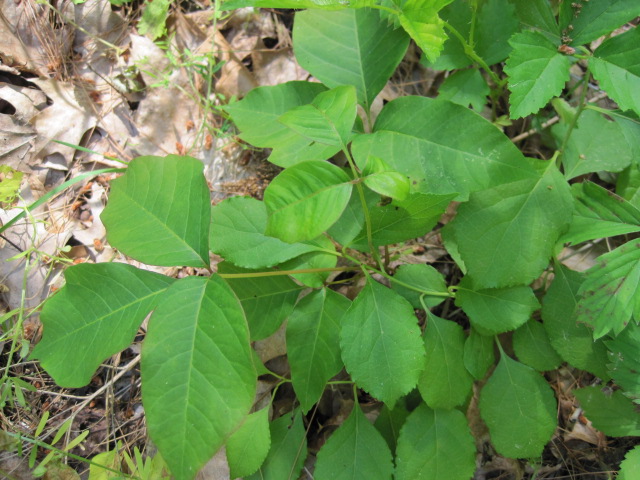
Most gardeners have encountered poison ivy at some point, and it is not a fun experience.
ADVERTISEMENT
I am very allergic to poison ivy. while working for the phone company years ago, I discovered that stuff is growing everywhere! We used Technu, with good results. Since it must be used imediately to wash the oil off the skin we carried it every day. It doesn't really work to cure the rash once it appears, just to remove the oil from the surface. The best cure I have found for the rash is to go swimming in a body of salt water, if it is possible. I had rash/blisters over 70% of my body disappear in under 24 hours. The best inland remedy is to use Jewelweed tea. Pour and daub liberally on rash and it clears quickly. Easiest way is to pull entire plant, rinse off roots, pack a blender jar full with some water and blend into a paste. Apply liberally to rash, wrap, and leave it for a couple hours.
RE: Relieving the Itch -- "Hah ... The Tecnu Product Never Worked for Me" ! It is a little bit on the pricey side and, in my opinion ... "A Waste of Good Money" ! Instead, ASAP ... resort to grease removing dish washing liquid ... way less expensive. Cleanse first with dishwashing liquid in cool water and rinsing and cleansing (Twice) and then cleansing and rinsing in (Warm) water. Works every single time ! I have been told that farmers used this method by an old veterinarian of mine (Ellen Friedman who once had a practice in NJ). Oh, wash your clothes and your tools with it this way as well.
Thanks for sharing! That is a great tip!
My grandmother told me years ago that the problem with poison ivy is that the sap sticks to your skin so you end up spreading it all over yourself when you're trying to wash it off. Now when I encounter poison ivy, I first use my hands (not a wash cloth) to wipe my skin down with rubbing alcohol to cut the sap. Afterward, I proceed to take a shower using soap and water. As a result, I have not had to use calamine or any of the other remedies because I've never had a breakout.
Poison ivy has taken over where my garlic is growing. My question is will the roots mix and would I get poison ivy rash from pulling the garlic cloves out and eating them?
This is an informative article that I enjoyed, thanks. I've been allergic since I can remember, having had a bad reaction when as a toddler some older kids played a trick on me by mixing poison ivy with honeysuckle as we were sucking the nectar from the flowers, and living in the south, being a surveyor, and being outside most of my life. I've learned to immediately recognize poison ivy and oak in its many variants. Once as an adult, on a job with no other choice, but having to work in it and cut through poison ivy overgrown lot on a hot humid day, me and my helper ended up in the hospital. Yes, steroid shots work. This was many years ago, the drugs have gotten better.The best prevention is to stay out of it. Jewel weed works well, but who has jewel weed handy? Technu works well if used in time. Bleach bath followed by a cool shower if available as soon as possible. Having poison ivy or oak on my land is not an option for me. Drastic measures are in order, and that means spraying herbicide concentrated enough to kill it. You can plant your plants after you get rid of the bad stuff. If it's a large vine then chop the vine leaving about a foot gap in the vine between root side and top side and spray the root side of the vine where you created the wound so the plant will suck up the poison. This should be done early spring before it makes seeds.
I moved some dirt from the rear of my property to the front raised beds. Then I got horrible poison ivy. So I am not sure if I got it from roots in the soil, but there wasn't any actual leafy plants in it. (although I am highly allergic). But I am not sure if I should just scrap those beds because I don't want any potential ivy oils to end up on my food. THoughts?
I have used witch hazel and tea tree oil. both work well. even for my horses when they get into it.
I have pulled such large roots out that I fear I will hurt my back, they are so large I can not get them all out. I pull and encounter such large roots I feel defeated but I get them out or pour weed killer concentrate on them.











